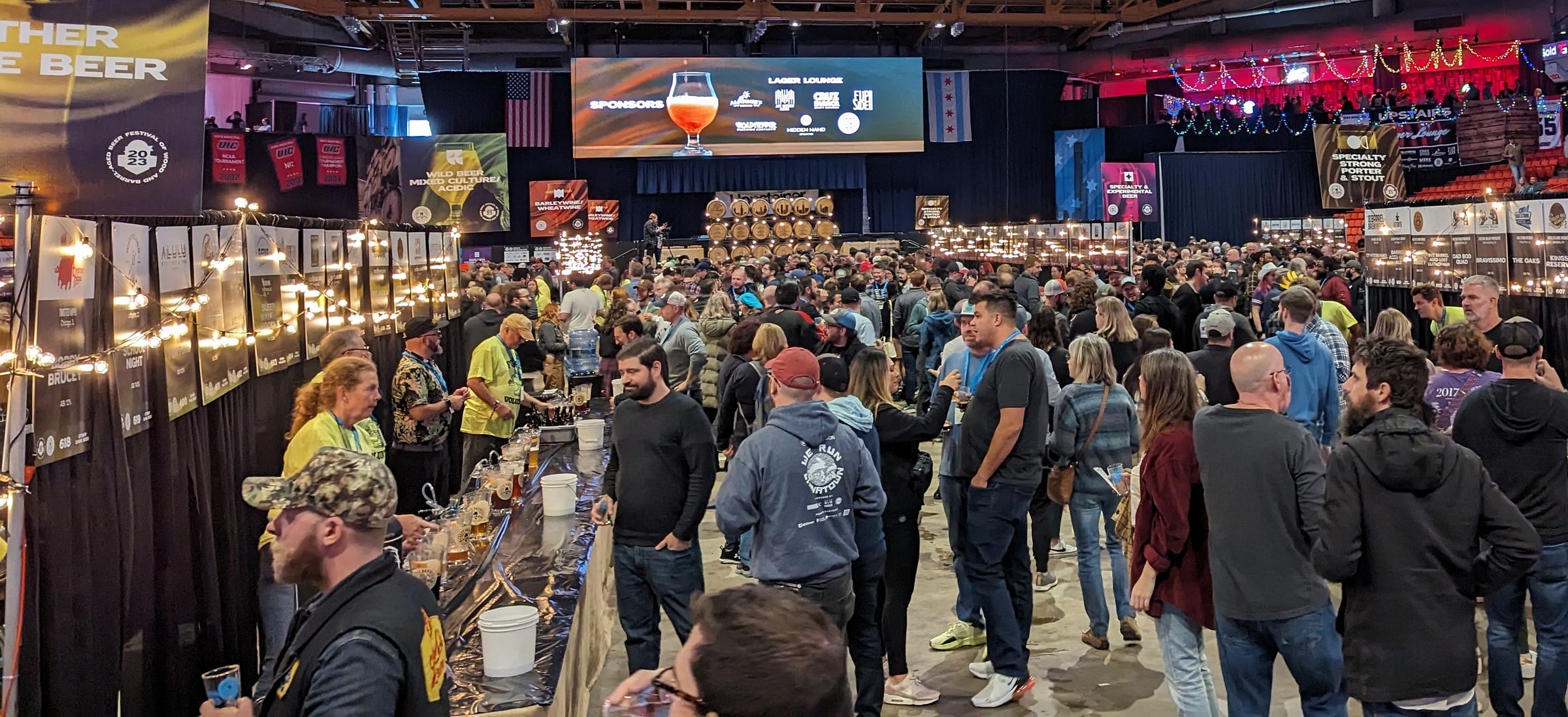A big theme from many of this year’s FoBAB award winners can be summed up in a single word:
“Who?”
That’s what many of us kept saying as medals went not to well-established repeat winners with highly regarded barrel programs, but to small brewery after small brewery from around the Midwest and beyond whose names we didn’t recognize.
Before FoBAB, how many of us had ever heard of Minneapolis’ Idyll Forest Artisan Ales? Of Full Mile Beer Company & Kitchen from Sun Prairie, Wisconsin? Or Centerville, OH’s Loose Ends Brewing? Or places like False Idol, or Ever Grain, or Magnanimous?
Most years there are winning beers from small locations but nothing, it seems, like this. And I think that’s awesome.
Because, yes — big breweries with lots of resources still walked away with medals for their barrel-aged beers. Two of those are (or were until recently) big A-B brands: Wicked Weed scored a medal and 10 Barrel took home three. Boulevard, Sun King and Firestone Walker came away with wins of their own.
But we also didn’t see any wins from reliable outfits like Werk Force, Pollyanna or Revolution. (We sadly also didn’t have a previous reliable winner in the form of Smylie Brothers. I also got a genuine pang of emotion seeing the final barrel-aged beer pouring from Oswego Brewing Company. Alas.)
If all this means that the world of barrel-aging quality is continuing to flatten out, I’m thrilled for it. Beer is an industrial product but putting it into a barrel to generate a desired affect requires a certain art, as does blending those beers into something greater than the sum of its parts. Places like FoBAB are where you get to see the payoff of lots of expensive experimentation and investment in something special, and I’m happy to say that more FoBAB entries than ever are genuinely good beers.
If we’ve finally circled around to barrel-aged beer being a product that can be great from massive barrelhouses and just as great from single barrels patiently waiting in the corner of some small town taproom, then I’m perfectly happy with that. More exciting beers to explore for all of us. And any of us, anywhere, might be able to access world-class barrel-aged beers.
I also still love having the event at the Credit Union 1 Arena — with space for beers on the mezzanine, beers on the main floor, room outside for the Goose Island railcar and two separate spaces set aside for NA hop waters and lagers, it’s pretty much the perfect size for a festival like this and still have room for people to sit and spread out. For those of you who remember the overwhelming noise (and, later in the event, the … aroma) of the wild/cider room at the previous location, you know what I’m talking about.
If I would want for anything, a little quiet space set aside for the sensory-sensitive would be nice to have. Other festivals have instituted this and there have been times when I’ve been overwhelmed by the simple sound and stimuli of a fest, even independent of alcohol consumption.
There are only two beer festivals that I travel interstate for: GABF and FoBAB. Even though prices haven’t gone up in quite a while, $85 for a ticket to FoBAB1 is a bit dear (even in spite of inflation) but when you consider how much access you get to a whole world of amazing, inventive, creative, time-consuming and overall intense beers from around the country … well, I’m still saying it’s well worth the trip.
Premium subscribers get immediate access to the other things I took away from this year’s FoBAB: 700-ish words and notes on emerging themes, beers I liked, thoughts on hop waters and a discussion of what could be the best Malort beer ever. This post will unlock at a later date for free subscribers and be posted to the GDB website at that time. Don’t want to wait? Need it now? Great — become a Premium Subscriber here:
You’re also welcome to nominate this newsletter as one of the Best of Chicago for 2023 — nominations for the Chicago Reader’s award close tonight.



